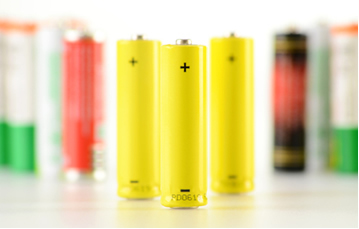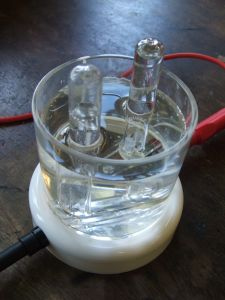Electrochemistry is a branch of Chemistry that studies the use of redox reactions, in which there is transfer of electrons, for the formation of electric current, as well as the reverse process: formation of chemical energy through energy electric.
Thus, Electrochemistry is usually divided into two parts:
- Conversion of chemical energy into electrical energy
This is the study of stacks (or electrochemical cells) and batteries, which are devices where chemical species are placed to react spontaneously, with electron transfer between them, one of which reduces and the other oxidizes. This transfer of electrons is used to generate electrical current and that's why these devices are also called accumulators.

The difference between cells and batteries is that the former are made up of just two electrodes (a cathode (positive pole where reduction occurs) and an anode (negative pole where oxidation occurs)) and a electrolyte (Ion conducting solution also called salt bridge). Batteries, on the other hand, are formed by several cells connected in series, in which the positive pole of one is connected to the negative pole of the other, and so on. For example, the lead battery used in automobiles is made up of six cells with an electromotive force equal to 2 V each. Therefore, this battery has 12V.
When the chemical reaction runs out, energy stops being supplied. This is the case of batteries primaries, what are not rechargeable. On the other hand, in the case of reversible reactions, it is necessary to apply an electric current so that the inverse reaction occurs and the reactants will be formed again. These are cells or batteries rechargeable, called secondary.
- Conversion of electrical energy into chemical energy:
it is about the electrolysis, a process in which an electric current is passed through a medium in the liquid state that has ions, producing chemical reactions. If the liquid is a molten substance, we say it is a igneous electrolysis. But if it's an aqueous solution, then we have a aqueous electrolysis.

Electrolysis is carried out in an electrolytic vat, where the liquid is placed and two electrodes (usually inert, made of platinum or graphite) are immersed in it. These electrodes are connected to a generator that supplies the electrical current.
By Jennifer Fogaça
Graduated in Chemistry
